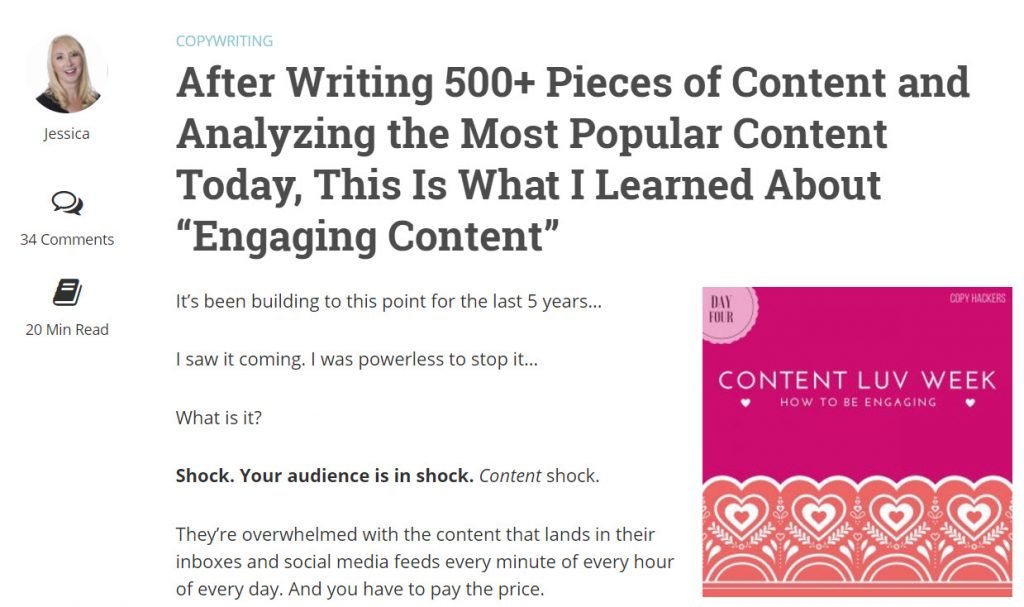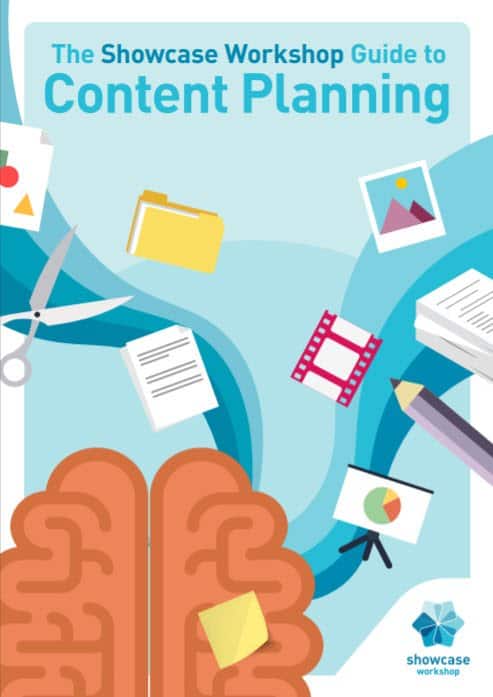Startups, enterprise organizations, creative agencies, freelancers … you are making the same mistakes with your content.
And it’s costing you.
It’s costing you customers.
It’s costing you money.
It’s costing you time.
Most importantly, it’s costing you authority.
That’s the bad news.
The good news is, if you avoid these five mistakes, your content will stop costing you so much and start working for your business.
Mistake #1: Not Understanding AND Serving Your Audience First
In a recent guest post I wrote for Crazy Egg, I used the example of a car salesman trying to sell a two-seater sportscar to an active family of four. That salesman was not just blind to his audience … he was purposefully ignoring the facts.
I hate to say it, but I see this happen all the time. People say they want their content to have “personality” — or worse, they want the content to have their personality — which completely ignores the most important person in the room: the customer.
Now, content should reflect the company culture, or the business owner if the business is really just a single person (speakers and many consultants, for example). But personality should come second to meeting customer needs.
Otherwise the content is just … pretty words.
Every word of your copy or content should do a job. <– Tweet the heck out of that, please.
You must understand your audience and, like the revered guests they are, serve them first.
Only then can you create content that resonates with them, engages them, compels them to share your message, and ultimately moves them to buy.
I’m not going to say you have no place in your content … but you definitely should take second place in it.

Image credit: tookapic on Pixabay
Mistake #2: Not Measuring Your Results
How do you measure the success of your content?
- Increased website traffic?
- Improved position in the SERPs?
- More leads?
- More sales?
- More email subscribers?
- Higher click-through rates?
- More speaker requests?
Okay – better question. Are you measuring the success of your content?
Because a lot of people don’t.
These days I only work with clients who are committed to tracking the results of the content I create for them. There are two important reasons for that:
- When you track your results, you can discover what works and what doesn’t work, and adjust your strategy and future content accordingly.
- You see your ROI more clearly. As a content writer who seeks first and foremost to be a valued business partner to my clients, this is critical! If they can’t see how my work benefits them, eventually they’ll start seeing the expenditure as a budget drain rather than a high-ROI investment.
Even if you have a content strategy in place, you’re still throwing spaghetti at the wall to see what stick unless you’re measuring your results.
Mistake #3: Not Promoting Your Content
A single content asset just floats in the sea of content online today. Like an unanchored buoy.
Promoting that content — drawing attention to it through various channels — anchors that buoy. Then it ties boats to the buoy. Then those boats draw other boats that want to see what’s going on. Suddenly, you’ve got a whole population tied to, pointing at, and drawing attention to that content asset. The buoy is no longer floating out at sea alone — it’s creating an entire ecosystem around it.
A single blog post won’t do anything for your business. Neither will a white paper or an e-book or even the world’s greatest email drip course. Unless people hear about it.
And that means: promotion.
Post your content on social media. Add a link to your latest lead-gen landing page in your email footer. Share your white paper with your mastermind group, your business club and your mom.
Make an effort to get the word out about what you’re doing. Because unless you’re an SEO genius (or you hire an SEO genius), the likelihood of someone stumbling across your content is pretty low.
Mistake #4: Not Editing
Need I remind you that proofreading is cuter than a kitten?
Every single thing you publish should be thoroughly edited. Not because I’m the grammar police (though that’s a role I’m quite comfortable in), but because a lot of blatant mistakes in your content destroys your authority. It makes people question your credentials and expertise. Worse, it may make some people question your site or company’s legitimacy.
Considering that blatant mistakes are one of the markers of spam content, phishing schemes and other cyber crimes, I want you to take this very, very seriously.
Most of the time, the first impression is the only impression you get.
If your content is so riddled with errors that it makes the reader wonder if their computer is about to contract malware, you’ve got three options:
- Refresh your technical knowledge of the language you’re writing in
- Hire a professional — either a writer to take over your content creation or an editor to polish the content you’re writing yourself
- Assign one of your well-written colleagues to review what you write before you publish it
That said, a typo here and there is not the end of the world. We’re human, after all. Mostly I just want you to consider editing an important part of your marketing strategy — because it matters more than you might think.
Let’s end this on a happier note, though, shall we? HubSpot found some pretty hilarious mistakes for this blog post — but I love it especially because at the end they poke fun at themselves for one of their own mistakes.
Mistake #5: Not Using Visuals
You want to know what’s one of the top compliments I get about the content I write? I illustrate my points.
Often that means using real-world examples to help put concepts into context.
It also means, however, that whenever possible, I show people what I mean using visuals such as screenshots, images, graphs and charts. Here’s an example.
There are a lot of visuals in there … to the point where I actually got a few trolls complaining about it. But hey — attracting trolls is a sign of success today, right? Right?
The point is, visuals help illustrate concepts for your reader, and that’s a good thing.
Visuals also break up your content so it’s not just blocks of text. We humans can only handle so much text before our eyeballs need a break. Content that uses an image for every 75-100 words gets the most shares, according to this BuzzSumo report.
Finally, visuals add character to your content. You want your personality to come across? Let visuals do some heavy lifting.
It’s easy to say, “I’m a writer, not a designer,” and poo-poo Mistake #5, here … but you’re a smart cookie. You know you don’t have to be a designer to add basic visual elements to your content.
For more advanced visual impact, of course, hire a designer. Take some of that marketing budget and pull in a good designer to help you bring your words to life. It’s a worthwhile investment.
Look at how Showcase Workshop added visual elements to their Guide to Content Planning. It turned what could have been a dry topic into a more engaging read.
Wrapping Up
We’re human. We make mistakes. But you can avoid costly mistakes in your marketing by serving your audience first, measuring your results, promoting your content, editing, and using visuals.



